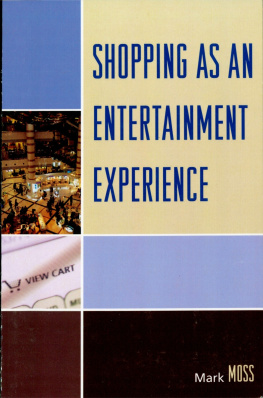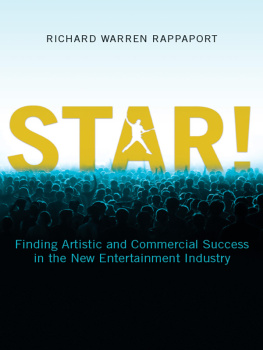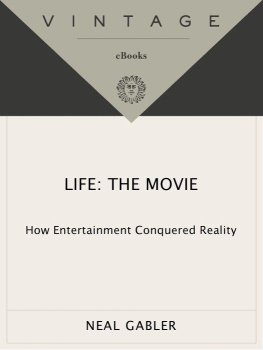Stanford University Press
Stanford, California
2009 by the Board of Trustees of the Leland Stanford Junior University. All rights reserved.
No part of this book may be reproduced or transmitted in any form or by any means, electronic or mechanical, including photocopying and recording, or in any information storage or retrieval system without the prior written permission of Stanford University Press.
Printed in the United States of America on acid-free, archival-quality paper
Library of Congress Cataloging-in-Publication Data
Stromberg, Peter G.
Caught in play: how entertainment works on you / Peter G. Stromberg. p. cm.
Includes bibliographical references and index.
9780804771276
1. AmusementsSocial aspects. 2. PlaySocial aspects. 3. RecreationSocial aspects. I. Title.
GV1201.38.S78 2009
306.481dc22
2008041877
Designed by Bruce Lundquist
Typeset at Stanford University Press in 10/14 Adobe Garamond
Foreword
WE ALL KNOW what it means to be completely in the grip of an activityplaying a game, watching a film, pursuing a hobby, reading a book. So absorbed are we that we somehow lose track of time and place and are carried away into an alternate, imagined universe. Peter Stromberg calls this experience being caught up. His book is a high-flying set of reflections on what lies behind our capacity to get caught up in this way. In this landmark study, Stromberg carves out a new terrain for anthropological analysis: the world of entertainment. Its almost shocking to think that it took so long for anthropology to stake its claim.
What makes entertainment an apt subject for an anthropologist rather than a sociologist, psychologist, or historian? Obviously, entertainment is a cultural domain of great significance in modern life. But in Strombergs synoptic vision, the modern notion of entertainment straddles general human capacities and specific historic and cultural circumstances. Its perfect grist for the holism of the anthropologists mill. To understand the relation of this general capacity for being caught up to the historical evolution of modern forms of entertainment requires the kind of bridge between human nature in general and human culture in particular that can best be provided by a psychological anthropologist.
On the human nature side of the equation is Homo sapiens evolved capacity for simulation of experience and what Stromberg calls meta-action. People, it turns out, dont occupy only the world of immediate physical reality. They have the ability to place themselves in imagined worlds and take on alternative roles in those worlds that may be very different from any role they play in real life. Stromberg explores this kind of role taking through captivating analyses of kids playing role-playing games and the impact on readers of romantic fiction.
He argues convincingly that these capacities to create and occupy imagined roles in imagined worlds, to mentally put ourselves in others shoes, are crucial cognitive skills that are basic to human socialization and social learning. Whereas mental simulations cannot always be observed from the outside, Strombergs datarole-playing games caught on filmshows in a powerful way the kind of virtuosic role switching between physical and imagined realities that is an essential aspect of being human.
Particularly important are Strombergs insights that, although play occupies a liminal zone between fantasy and reality, it is not normally confused with reality. So getting caught up in imagined worlds does not entail confusing that world with ordinary life. In this context, Strombergs discussion of the research on the complex effects that romantic fiction has on readers is especially illuminating. What all this implies is that these forms of play serve very special and nonobvious functions in relation to those ordinary realities that they at once simulate and oppose.
However potent these general insights about simulation and meta-action, taken by themselves they dont make complete sense of the contemporary entertainment scene. Entertainment may be a variation on the general theme of human play, but there is something distinctly modern about the world of entertainment Stromberg describes, and he knows it. Stromberg wisely avoids reducing entertainment to its universal cognitive features.
The world of contemporary entertainment has a history, and Chapter Three takes us on an eye-popping tour of what Stromberg considers key historical moments in the evolution of the modern culture of entertainment. It may be self-evident that modern entertainment has been significantly shaped by recent developments in technologies of representation. But Stromberg goes well beyond the obvious, tracing the roots of the culture of entertainment to the emergence in the 18th century of an ideal of a kind of rapt engagement in aesthetic representations such as novels and paintings. This idea of psychological engrossment in art forms grew out of an older ideal of aesthetic contemplation as a path to religious devotion, an idea brilliantly explored by the art historian Michael Baxandall in his book Painting and Experience in 15th Century Italy.
With the development of modern consumer capitalism in the 18th and 19th centuries, the ideal of cultivating religious devotion became secularized. Religious devotion became aesthetic sensibility and eventually evolved into an ideal of the cultivation of desire as an end in itself. So modern entertainment develops in tandem with modern marketing, and the result is a harnessing of some universal cognitive capacities for some very new and special ends.
What we have here is nothing less than retooling of the human psyche to lay the cognitive foundations of modern consumer culture. After all, capitalism proposes a world of action governed and justified by private desire. So it is no surprise that cultivating the inner experience of desire eventually becomes an end in itself, and a pivotal goal of modern entertainment.
Strombergs brilliant synthesis of this historical material covers a lot of ground in short order. But it is ultimately provocative and convincing. His excursion into the history of modern desire gives us a new way to think about some of the lessobvious forces shaping the world of contemporary entertainment.
Although Stromberg explores the many faces of entertainment, he avoids the trap of passing easy judgment on modern entertainment as good or bad. It is telling, however, that many of his case studies describe pathologies of engagement. In contemporary American youth culture, there seems to be a thin line between getting caught up and becoming addicted; this book does not skirt the issue.
I was especially intrigued by the role that boredom plays in the culture of smoking and drinking among college students. Stromberg stresses that boredom is a universal human experience that is culturally malleable. The modern fear of boredom that Strombergs research with college students uncovers is a powerful example of how boredom is culturally conditioned. This particular species of boredom is characteristic of late modernity. It cannot be fully understood without exploring the deliberate cultivation in consumers of ever-intensifying stimulus hunger, an appetite that is surely a hallmark of late capitalism.











